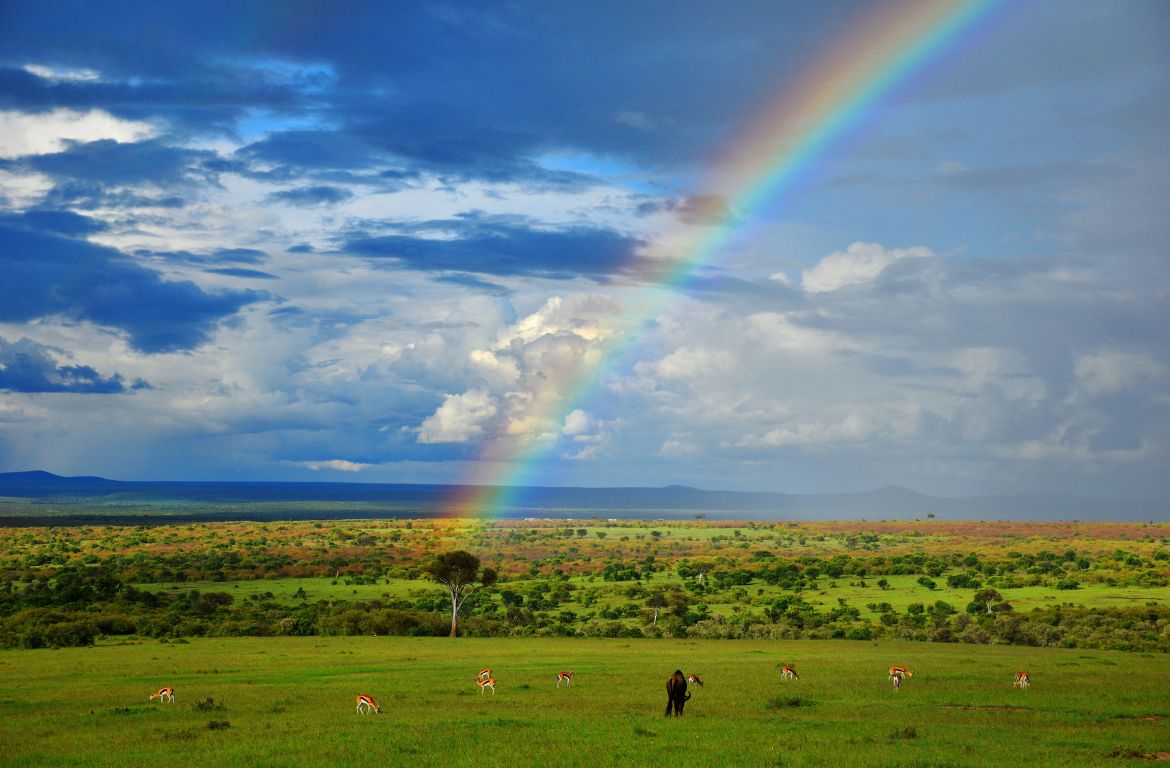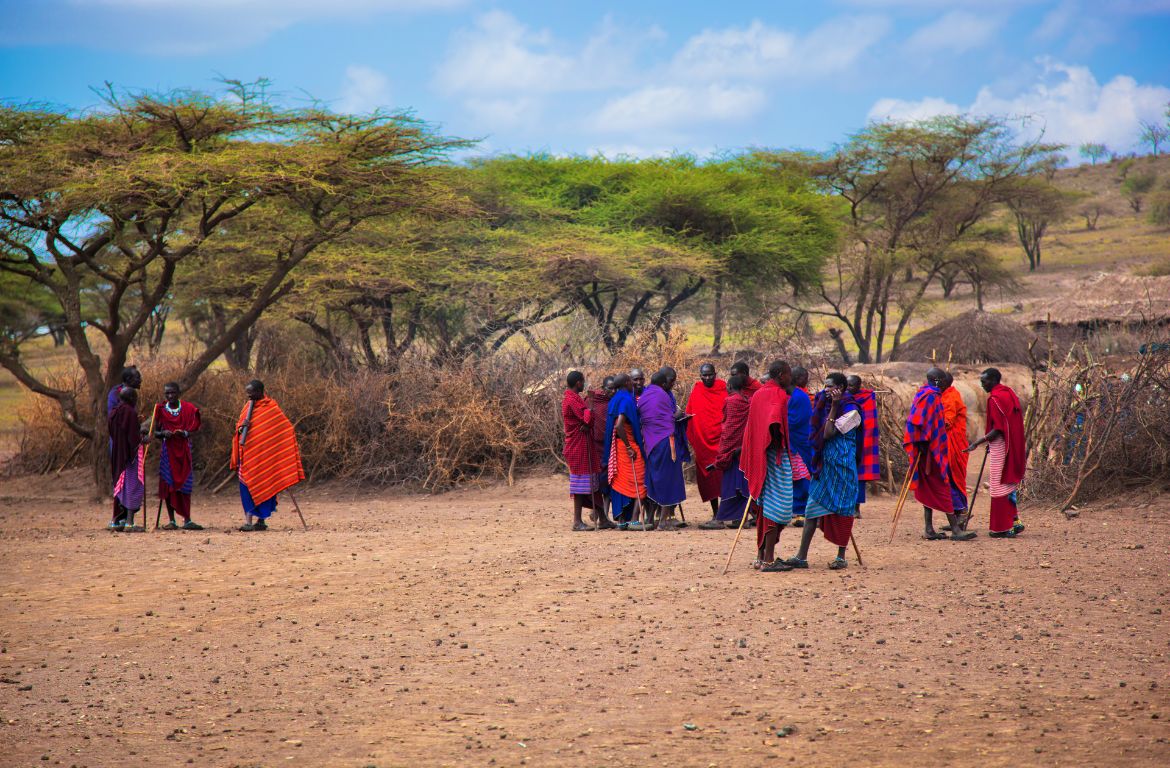
The Masai Mara National Reserve
The Masai Mara National Reserve is a captivating and iconic destination that draws visitors from all over the world. Located in southwestern Kenya bordering Tanzania’s Serengeti National Park. It is named after the Maasai people and the Mara River, which flows through the park. The park covers an area of over 1,500 square kilometres, this vast wildlife reserve is a place of incredible natural beauty and is home to an extraordinary variety of wildlife, including the famous big Five. Whether you’re a seasoned safari-goer or a first- time visitor, Masai Mara offers an unforgettable adventure that is sure to leave you in awe.
The Masai Mara National Reserve has a typical East African climate, with temperatures ranging from 20°C (68°F) to 30°C (86°F) throughout the year. The park experiences two rainy seasons: the long rains from March to May and the short rains from October to November. The dry season runs from June to October and from December to February
Masai Mara National Reserve is a year-round destination, with each season offering a unique experience for visitors. The best time to visit the park depends on individual preferences, with some preferring the dry season for wildlife viewing, while others enjoy the lush vegetation and fewer crowds during the wet season.
The Masai Mara National Reserve is an excellent destination for a wildlife safari for several reasons:
- Rich wildlife.
- The Great Wildebeest Migration.
- Stunning scenery.
- Cultural experience.
- Accessibility.
- Accommodation.
Rich Wildlife
The Masai Mara National Reserve is known for its rich and diverse wildlife, including the famous Big Five – lions, leopards, elephants, rhinos, and buffaloes. The park’s open Savannah grasslands and riverine forests provide habitats for over 95 species of mammals and 570 species of birds.
The park’s diversity of species and habitats makes it an excellent destination for a wildlife safari.
The Great Wildebeest Migration
The Great Wildebeest Migration is one of the most spectacular wildlife events in the world, and the Masai Mara National Reserve is the best places to witness it. The migration is an annual cycle where over a million wildebeests, zebras, and gazelles move between Tanzania’s Serengeti National Park and the Masai Mara in search of fresh grass and water. Here is some information about the Great Wildebeest Migration.

- Timing: The migration typically takes place between July and October, although the exact timing can vary depending on the rains.
- River crossings: One of the highlights of the migration is the river crossings. As the wildebeests and other animals move north from Tanzania to the Masai Mara, they must cross the Mara River. This is a dangerous and thrilling event, as crocodiles wait in the water to attack the weaker animals.
- Predator-prey interactions: The migration attracts predators such as lions, hyenas, and cheetahs, who follow the herds and take advantage of the weaker and slower animals.
- Great herds: The migration is a massive event, with over a million wildebeests, zebras, and gazelles moving together in large herds. The sight of these herds stretching across the horizon is truly awe-inspiring.
- Viewing opportunities: you can witness the migration on guided game drives, hot air balloon rides, or walking safaris.
Stunning scenery
The Masai Mara National Reserve is not only known for its rich wildlife but also for its stunning scenery. The park’s open Savannah grasslands, hills, and valleys provide a picturesque landscape that offers excellent photo opportunities. Some of the stunning landscapes you can expect to see are:

- Rolling hills: The park has several hills that offer panoramic views of the surrounding plains. One of the most popular is the Oloololo Escarpment, which offers stunning views of the Mara River and the vast grasslands.
- Savannah grasslands: The Masai Mara’s vast open plains are dotted with acacia trees and offer uninterrupted views of the horizon. The grasslands provide habitats for a variety of wildlife, and visitors can often see herds of wildebeest and other animals grazing in the distance.
- Mara River: The Mara River flows through the park and provides water for the park’s wildlife. You will see crocodiles and hippos basking in the sun on the river banks, while wildebeests and zebras cross the river during the Great Wildebeest Migration.
- Sunset and sunrise: The park’s open plains provide excellent opportunities to witness stunning sunsets and sunrises. The golden light of the setting or rising sun casts a beautiful glow over the savannah, creating a magical atmosphere.
Cultural experience
The Masai Mara National Reserve is an excellent destination for those looking for a cultural experience. The park is named after the Maasai people, a semi-nomadic tribe that has lived in the area for centuries. Some ways in which you can experience Maasai culture at the Masai Mara;

- Maasai village visit: You can take a guided tour of a Maasai village to learn about their traditional way of life, including their housing, food, and social structure. You can also see their famous jumping dance and buy traditional handicrafts.
- Maasai market: You can visit Maasai markets, where locals sell traditional handicrafts, jewelry, and clothing made from beads and leather.
- Maasai cuisine: You can try traditional Maasai food, such as nyama choma (grilled meat).
Accessibility
The Masai Mara National Reserve is located in southwestern Kenya and is easily accessible by air and road
By air: The park has several airstrips that serve domestic flights from Nairobi. Some lodges and camps offer their own airstrips, making access even easier.
By road: The Masai Mara is about a 5-6-hour drive from Nairobi, depending on road conditions.
Once inside the park, you can explore the area by guided game drives, walking safaris, or hot air balloon rides.
Accommodation
The Masai Mara National Reserve has a range of accommodation options to suit different budgets and preferences, including lodges, tented camps, and mobile camps. Here are some of the options available:
- Luxury lodges: The park has several luxury lodges that offer five-star accommodation, gourmet meals, and a range of amenities, such as swimming pools, spas, and wellness centers.
- Tented camps: Tented camps provide a more authentic safari experience, with luxury tents that are equipped with comfortable beds, en-suite bathrooms, and private verandas
- Mobile camps: Mobile camps are a more rustic and adventurous option, with tents that are set up in remote areas of the park. These camps offer a more intimate and personalized safari experience, with fewer guests and a greater sense of wilderness.
- Budget lodges and camps: For those on a tighter budget, the park has several lodges and camps that offer more affordable accommodation options. These lodges and camps may not have the same level of luxury and amenities as the more upscale options, but they still provide comfortable accommodation and an authentic safari experience.
At Ahambi Tours we tailor-make your wildlife safari at the Masai Mara National Reserve based on your preferences, availability, mode of transport and class of accommodation to ensure you have a lifetime experience at the reserve.
